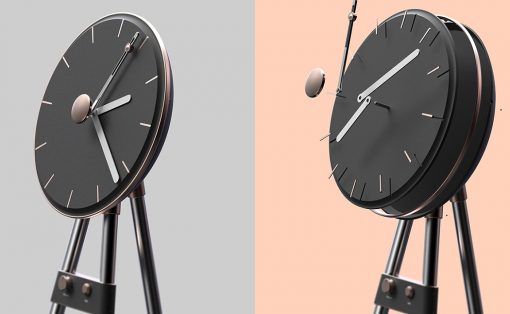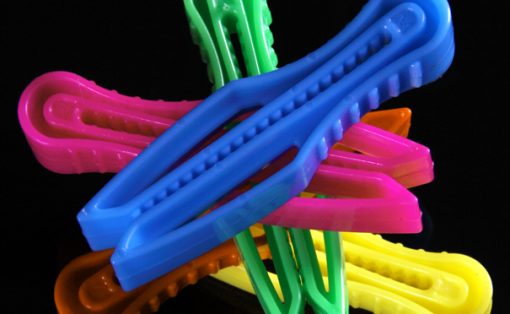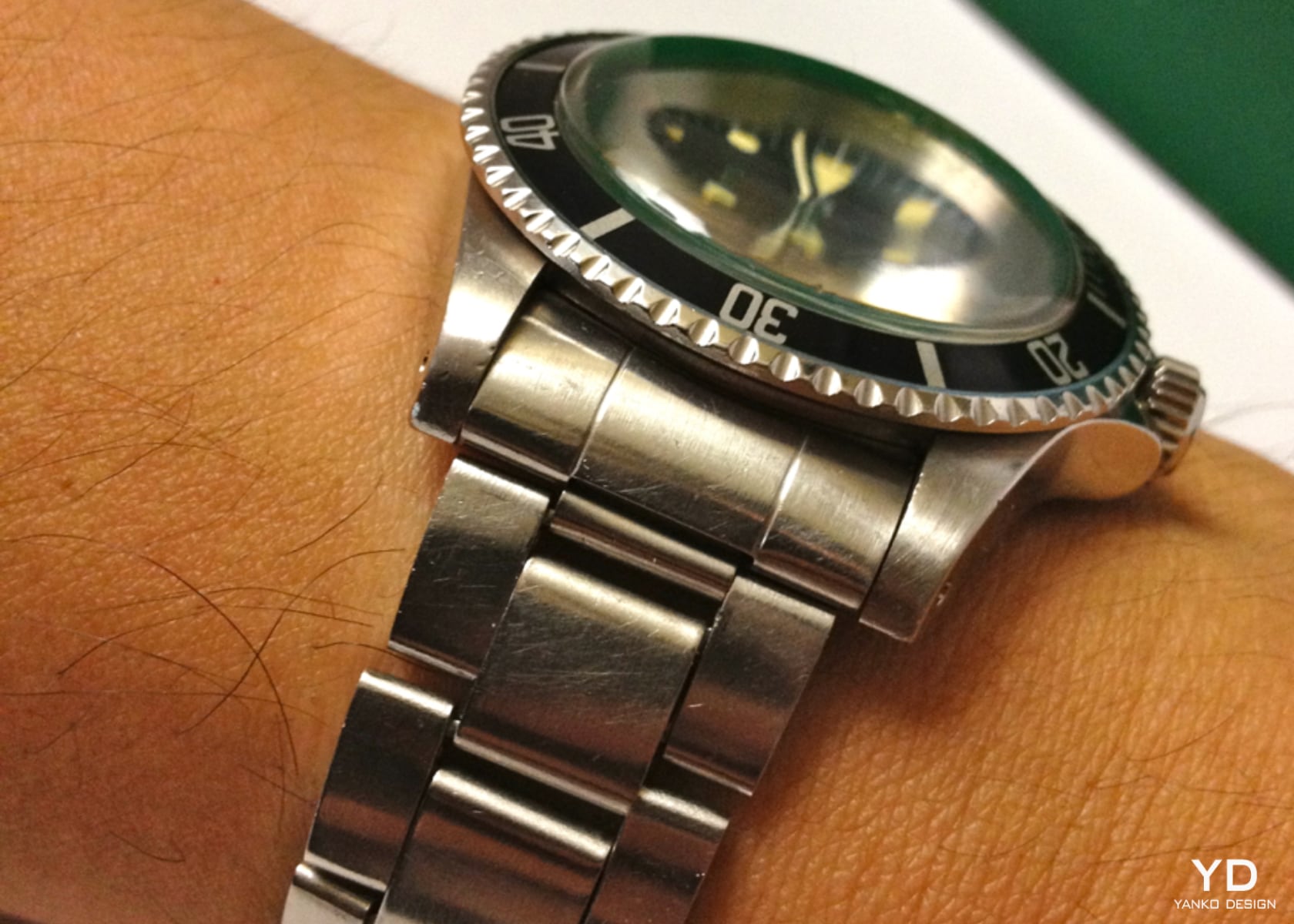
I regret selling three particular watches over the years: the Rolex 5512, Rolex Submariner 50th Anniversary Edition (known as the Kermit), and the Audemars Piguet 1998 Nagano Olympic Edition. Each piece has a unique story of how I acquired it, primarily through sheer luck. This is the first of three features where I’ll share my experiences with these treasured timepieces.
The Rolex 5512 was the first watch that sparked my interest in vintage timepieces, with its timeless design and rich history drawing me in. The Submariner 50th Anniversary Edition, fondly known as the Kermit, was another piece I deeply regret parting with due to its vibrant green bezel and its significance in Rolex’s journey. Lastly, the Audemars Piguet 1998 Nagano Olympic Edition was a watch I acquired purely by chance, and its rarity and connection to a momentous event made it a cherished part of my collection.
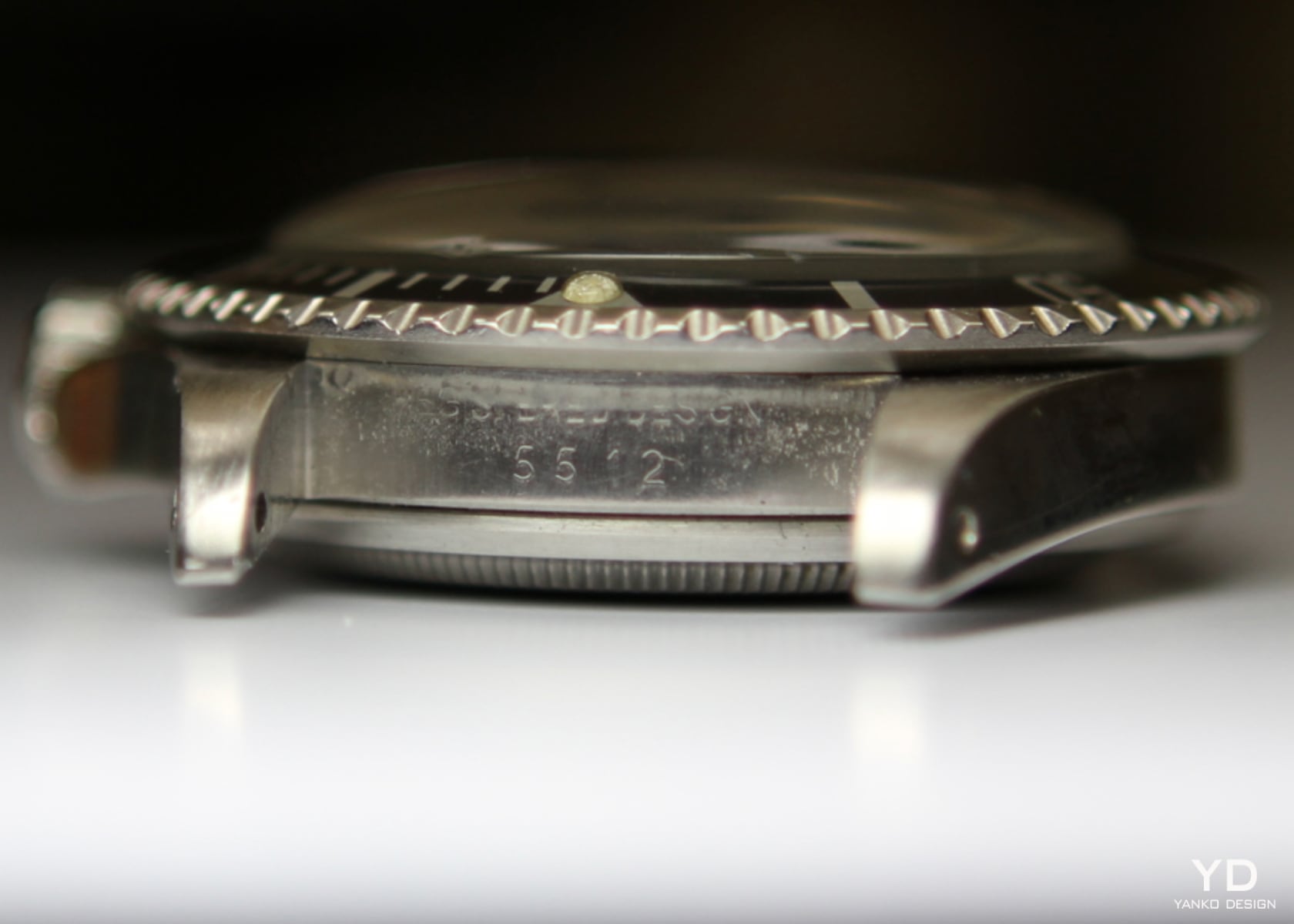
Rolex 5512 circa 1977
Despite the regret, each of these sales taught me valuable lessons about appreciation, patience, and the delicate balance between emotional attachment and practicality in collecting watches. I hope my experiences serve as a cautionary tale, helping you make wiser decisions in managing your collection.
Let’s jump straight into the Rolex 5512, but first, let’s discuss its significance. Introduced in 1959, the Rolex 5512 quickly became a legend in the world of vintage watches. This pioneering model set the gold standard for modern dive watches. Its production spanned two decades, from 1959 to about 1980, making it one of the longest-running references in Rolex’s storied catalog. Mine had the serial number 5002060, which puts it right between 1977 and 1978.
History and Production Timeline: Rolex 5512
The Rolex 5512 rolled off the production line in 1959 and embarked on a remarkable journey over its twenty-year run. It saw numerous tweaks and upgrades, each reflecting Rolex’s relentless pursuit of perfection. This model marked a leap forward in the Submariner series, featuring an oversized crown and newly introduced crown guards to shield it from harsh underwater conditions. These continuous improvements made the 5512 a favorite among professional divers and watch enthusiasts alike.
The 5512 underwent several modifications during its production to enhance its functionality and durability. These changes were part of Rolex’s commitment to maintaining the 5512’s status as a top-tier dive watch, making it a reliable tool for underwater adventures and a sought-after piece for collectors.
Design and Features
The Rolex 5512’s design represents practical elegance and functional details. Its stainless steel case, at 40mm, was notably large for its time, making it a bold choice. This watch was built to handle demanding conditions, balancing aesthetics with functionality.
Designer: Rolex
The rotating bezel, a key feature of the Submariner line, included minute markers for the first fifteen minutes, which is crucial for divers to track their underwater time. The bezel’s knurled edge allowed for a secure grip, even when wet or wearing gloves. Over the years, this bezel design remained largely unchanged, maintaining its practical utility.
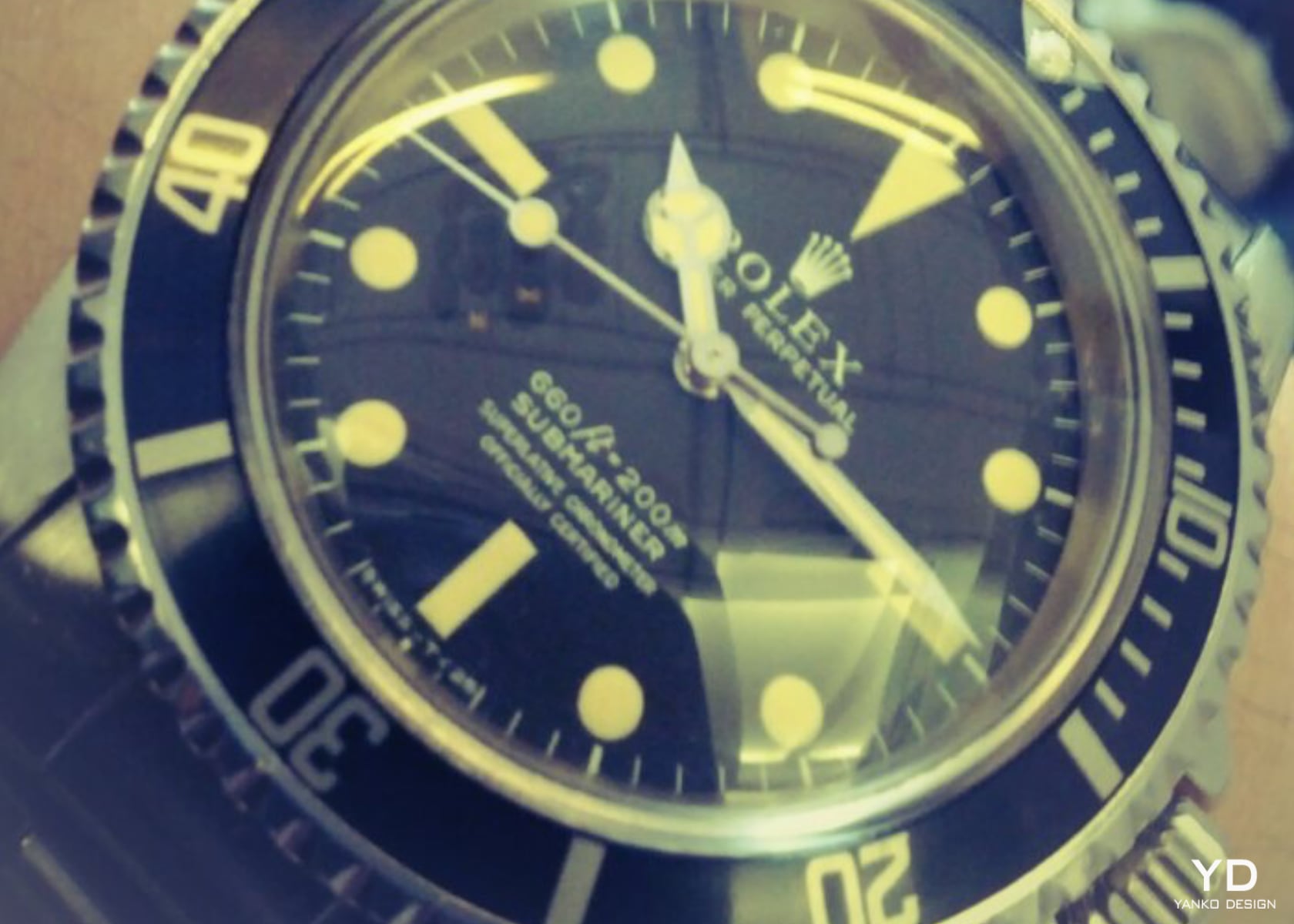
The dial of the 5512 saw several changes over its production run. Early models had a gilt finish with gilt hands, giving them a distinctive, warm look. These early gilt dials, with their glossy black background and gold-colored text and markers, are highly sought after by collectors for their vintage charm. Around the mid-1960s, the dial transitioned to a matte finish with white text and markers. This change improved readability, a crucial feature for divers. The matte dials, paired with white markers and hands, provided a clear, easy-to-read display under various lighting conditions.
One of the most significant design changes of the 5512 was the introduction and refinement of crown guards. This was the first Submariner model to sport crown guards, revolutionizing the watch’s durability and functionality. Initially, the 5512 featured square crown guards, which were soon modified to pointed crown guards. These early pointed guards, often called “cornino” (little horns) by collectors, provided increased protection to the winding crown from impacts and damage. However, they were prone to snagging and were eventually rounded for a smoother, more streamlined profile. This final rounded design struck the perfect balance between protection and comfort, becoming a defining characteristic of the Submariner series.
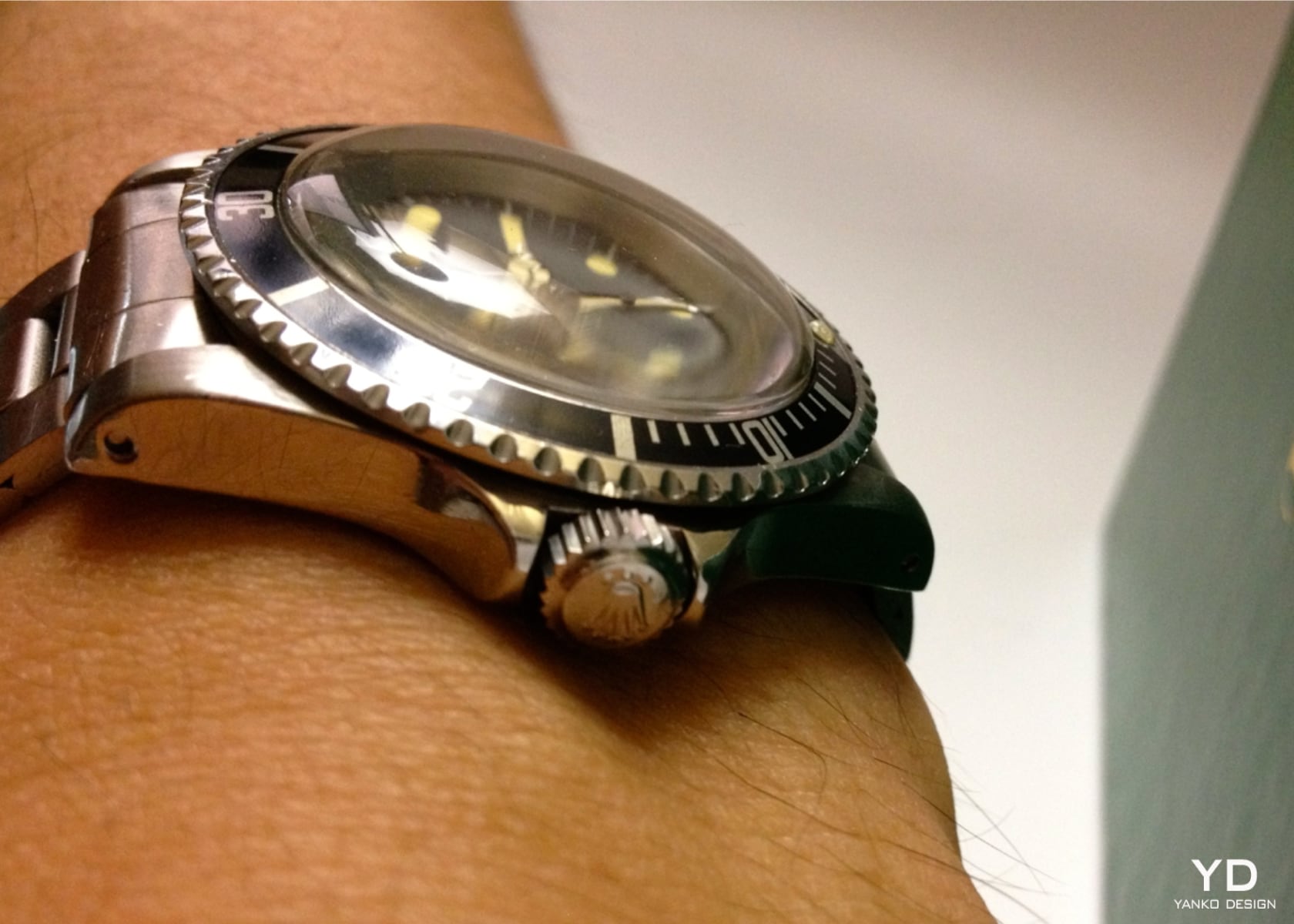
The Rolex 5512 also featured an Oyster bracelet, initially with riveted links and later with folded and solid links. These bracelet design updates improved the watch’s durability and comfort, ensuring it could withstand the harsh conditions of deep-sea diving while remaining secure on the wrist.
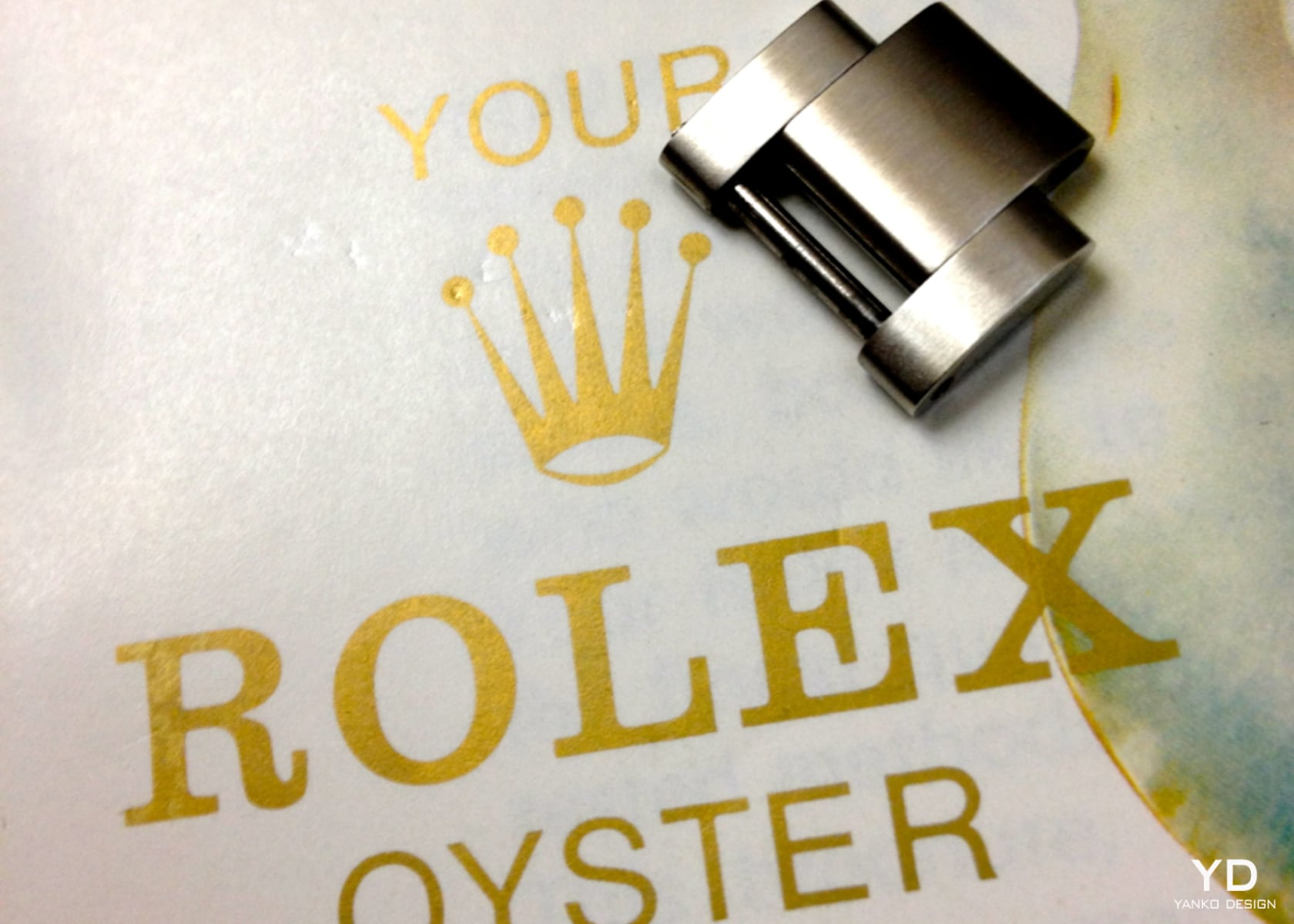
Additionally, the 5512’s caseback had a slightly domed profile, which, combined with the domed acrylic crystal, allowed for greater water resistance. This design ensured the watch could perform reliably at depths up to 200 meters (660 feet), a significant capability for its time.
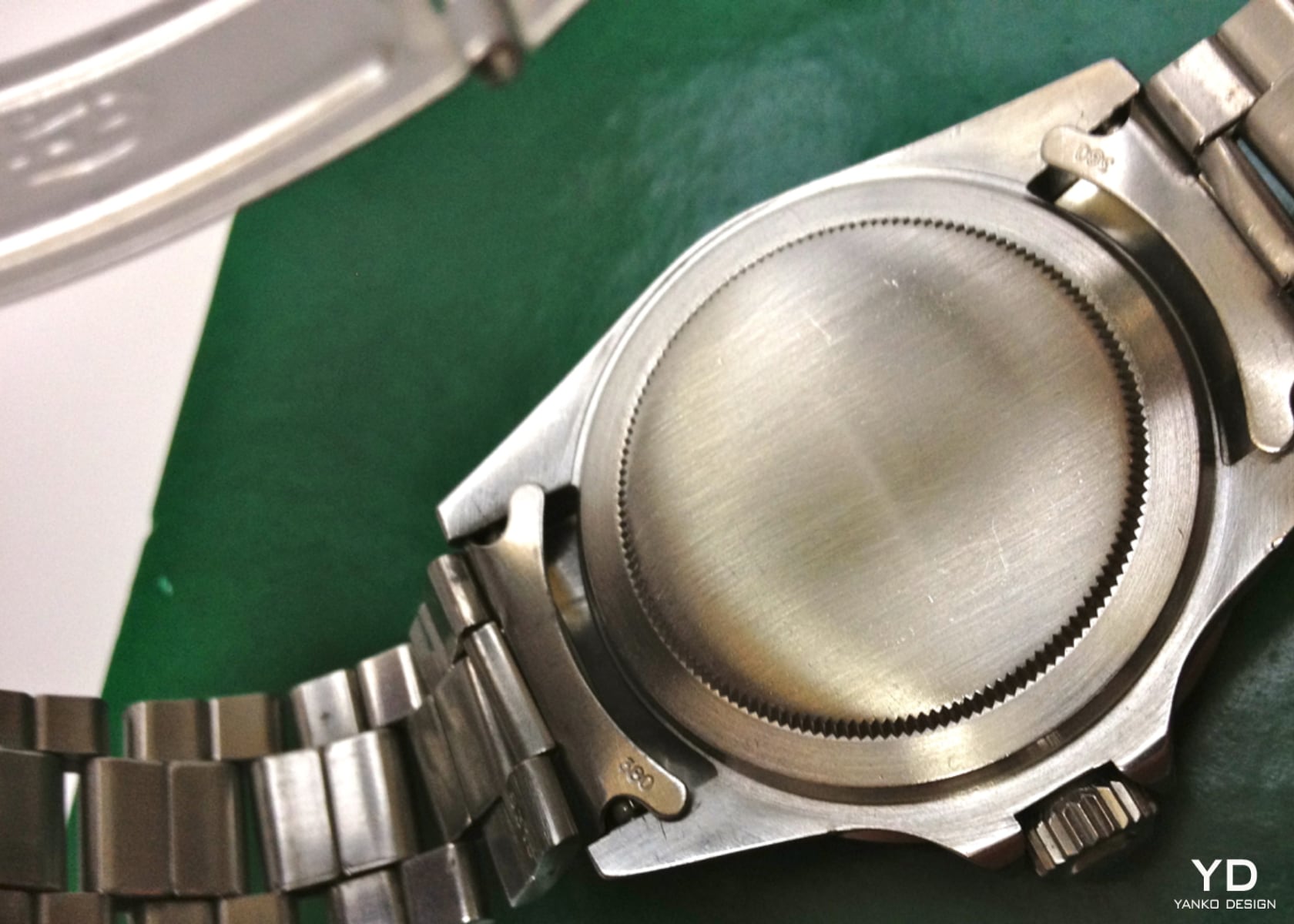
The progression of the Rolex 5512’s design is a journey of continuous improvement and practical innovations. Each change, whether in the dial, bezel, crown guards, or bracelet, was driven by a desire to enhance functionality, durability, and readability. This attention to detail makes the 5512 a remarkable dive watch and a cherished piece of horological history.
Movement and Certification
Under the hood, the 5512 was a marvel of engineering. Early versions housed the reliable Rolex Caliber 1530, which later gave way to the Caliber 1560 and 1570. These upgrades brought with them chronometer certification, a badge of honor that highlighted the 5512’s exceptional accuracy and Rolex’s unwavering commitment to quality. The chronometer certification set the 5512 apart from many other dive watches of its era, emphasizing its precision and reliability.
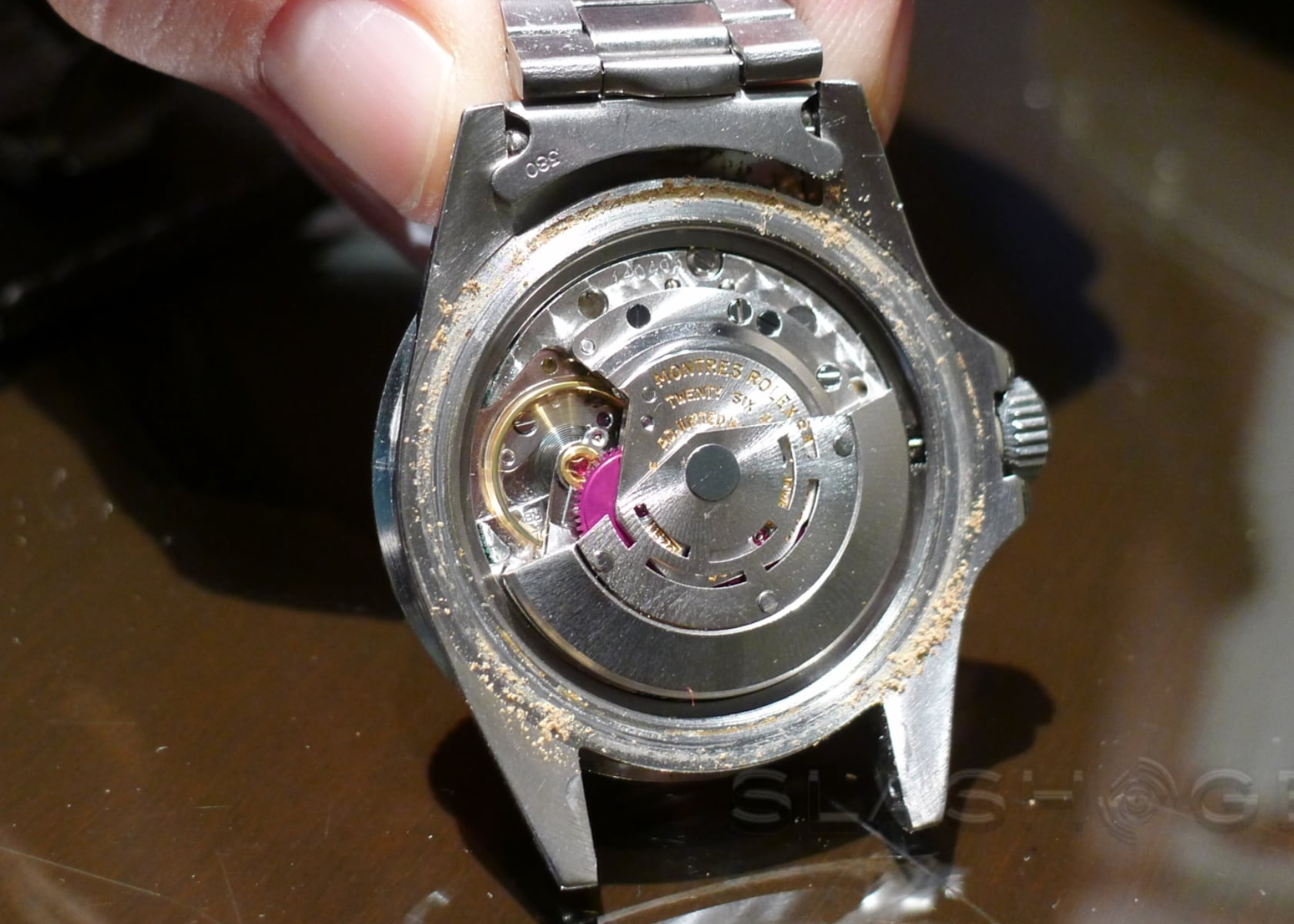
The first time the back was opened in over 20+ years.
The advancements in movement technology ensured that the 5512 could meet the demands of professional divers and watch enthusiasts. This blend of technical innovation and rugged design made the 5512 a distinguished model in the Rolex lineup, reinforcing the brand’s reputation for excellence in watchmaking.
Cultural Significance
The Rolex Submariner 5512 is a cultural icon. Known for its rugged durability and timeless design, it was a favorite among many, including Hollywood legend Steve McQueen. Despite the “Steve McQueen” nickname being mistakenly associated with the Rolex Explorer II ref. 1655, McQueen’s actual watch of choice was the Submariner 5512. In 2009, McQueen’s personal Submariner 5512 was auctioned for $234,000, highlighting its cultural significance and enduring appeal.
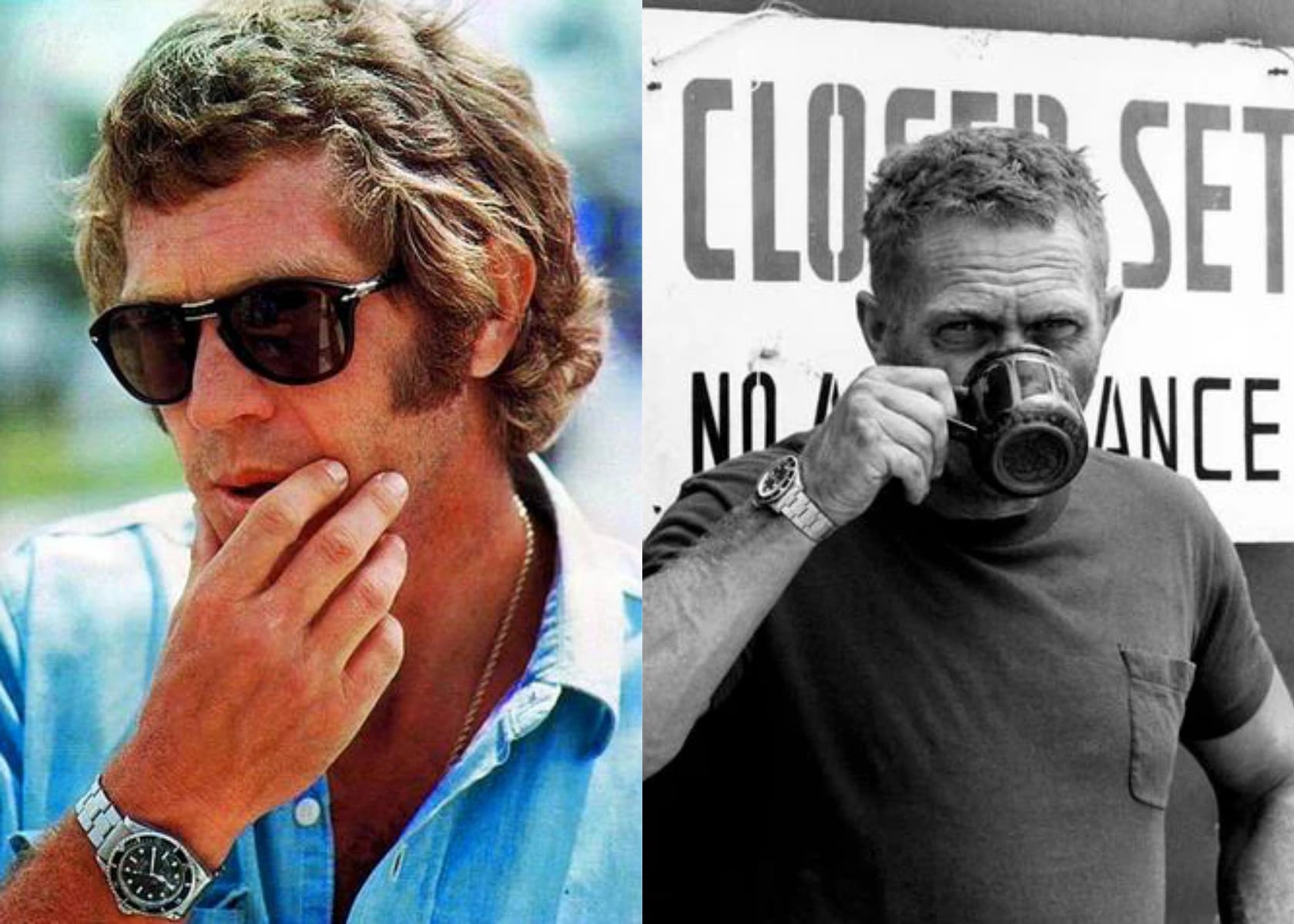
The Rolex 5512 is much more than a timepiece — especially to me. It symbolizes Rolex’s innovative spirit and dedication to precision. Its introduction marked a pivotal moment in the evolution of dive watches, and its enduring legacy continues to be celebrated by watch enthusiasts and collectors worldwide. The lessons learned from owning and parting with such an iconic piece highlight the importance of appreciation, patience, and making informed decisions in watch collecting.
How I found my Rolex Submariner 5512
It was a Saturday morning, like any other, except for an unrelenting itch that drove me to scour every pawn shop and antique watch dealer within a 100-mile radius of Phoenix. Despite seeing a few samples, the quality or prices were outrageous, ranging from $10,000 to $15,000, even back in 2012. Frustrated, I decided to head home. On a whim, I took a detour to a McDonald’s I had driven past for years but never stopped in. As I navigated through a strip mall to get there, I noticed a small, unassuming jewelry store. Intrigued, I decided to stop in. I asked the clerk if they had any vintage Rolex watches for sale. The store mostly carried inexpensive pieces, with the most expensive being a Timex. The clerk replied that she believed Paul had one in the case and went to check with him.
As I stood there, my anticipation growing, Paul, the store owner, emerged, holding a box that immediately caught my eye.
The vivid green box was topped with the iconic Rolex crown in gold. Its exterior was impeccably finished, with a glossy surface that exuded elegance and promise. The green lid contrasted beautifully with the gold base, a hallmark of the luxury brand’s presentation. The sticker on the side confirmed my hopes: “Rolex, Style #5512, Stainless Steel.”
The design of the box itself spoke volumes about what lay inside. The green symbolizes Rolex’s heritage and prestige, a color that has become synonymous with the brand’s identity. The gold crown on the lid is a simple yet powerful emblem of the watchmaker’s commitment to excellence. The gold base provided a striking foundation, grounding the box in a sense of luxury and tradition.
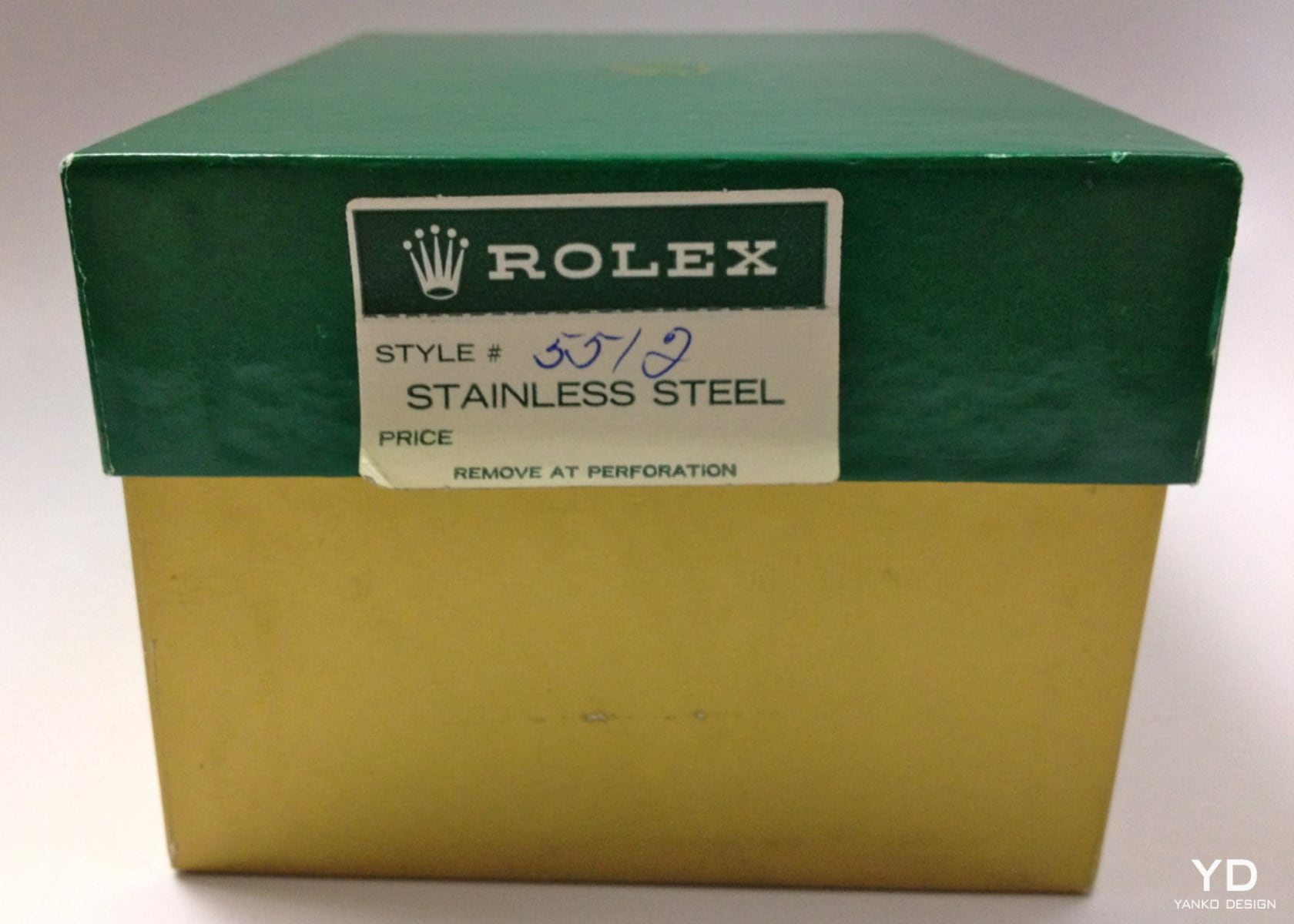
This box was more than a watch holder; it was a piece of art, encapsulating Rolex’s legacy in every detail. The moment Paul opened the box, I knew I had stumbled upon something extraordinary—a find that any vintage Rolex enthusiast would dream of.
As Paul opened the box, I was greeted by an interior that was equally as impressive as the exterior. The lid revealed a green leather case embossed with the iconic Rolex crown in gold. This inner case, with its textured leather finish, was a testament to the brand’s attention to detail and commitment to luxury.
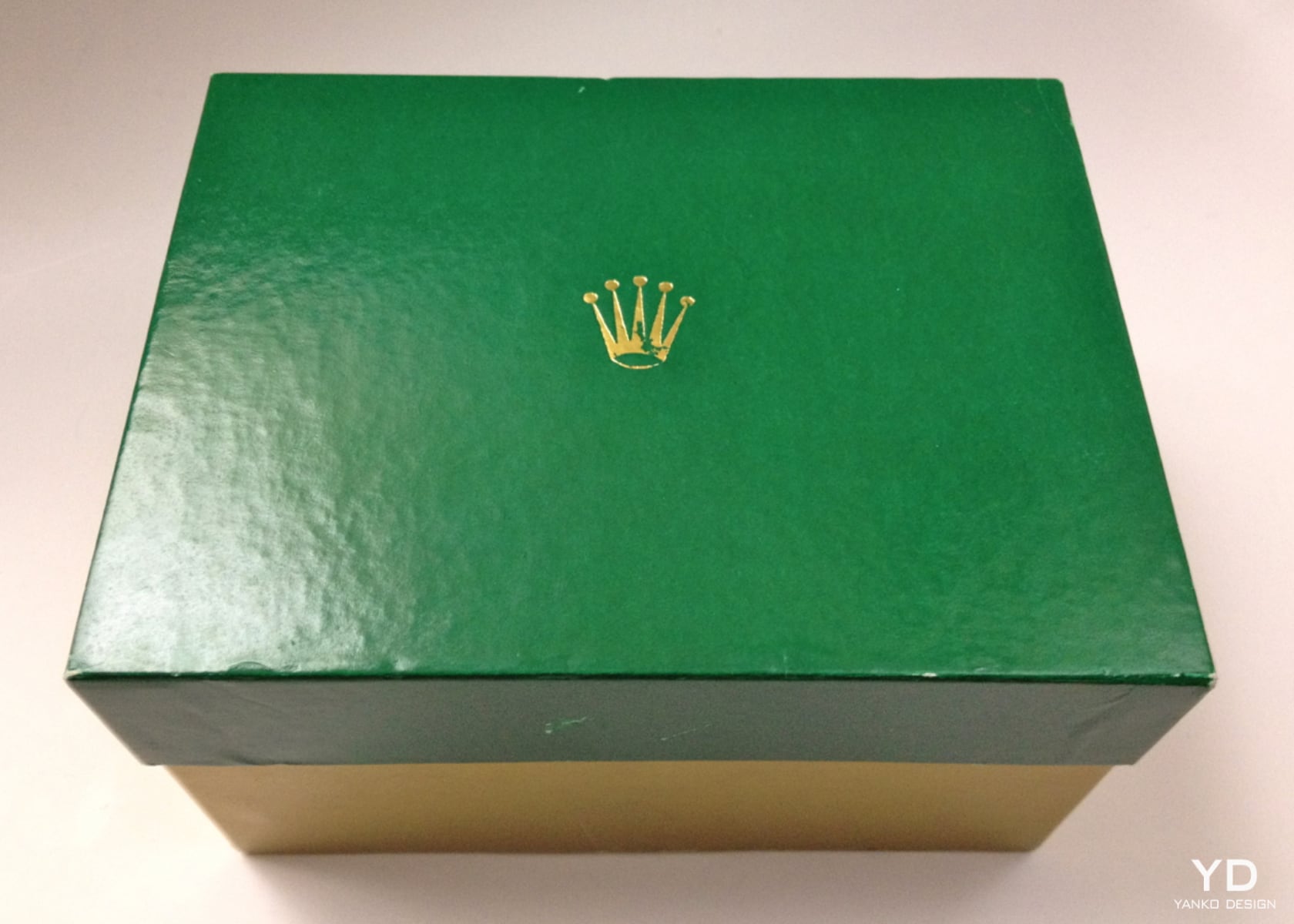
The leather case’s rich green hue matched the outer box perfectly, creating a cohesive and elegant presentation. The gold Rolex crown emblem stood out against the green background, symbolizing the brand’s prestige and heritage. The case’s sturdy construction hinted at the quality and care that went into protecting the timepiece within.
This box was more than the packaging. It was a prelude to the treasure inside. As Paul carefully opened the leather case, my excitement grew. The craftsmanship and design hinted that what lay inside was truly special—a Rolex Submariner 5512, carefully preserved and presented in its original, luxurious packaging.
At that moment, I realized I had found the watch of a lifetime, hidden away in an unassuming jewelry store, presented in a box that reflected the Rolex brand’s timeless elegance and exceptional quality.
Before getting into the details of the watch and its contents, Paul shared the rich history of this timepiece with me. He mentioned that Gary, the original owner, had purchased this watch from him on March 26, 1977. Gary hadn’t worn it in a long while, and since he was on a fixed income, Paul had just repurchased the watch from him and wasn’t planning on selling it, but since I asked, he was willing to make an exception.

Even before examining the watch and everything inside, I was trembling with excitement, my mind racing. This piece of history, in mint condition, would most likely cost me back $15,000 or more. That amount was more than my old beat-up pickup truck and the $2,000 cash stashed in the glove compartment. The stakes were high, and I could hardly contain my anticipation. But before I get into the price, let’s jump back to the contents inside the green box.
Contents of the Magical Green Box
Upon opening the green leather case, I was greeted by the sight of the Rolex Submariner 5512, nestled securely in its compartment. The watch itself was pristine, but there was more to discover. It was everything a watch collector could ever dream of—a complete set as if it were purchased brand new today.
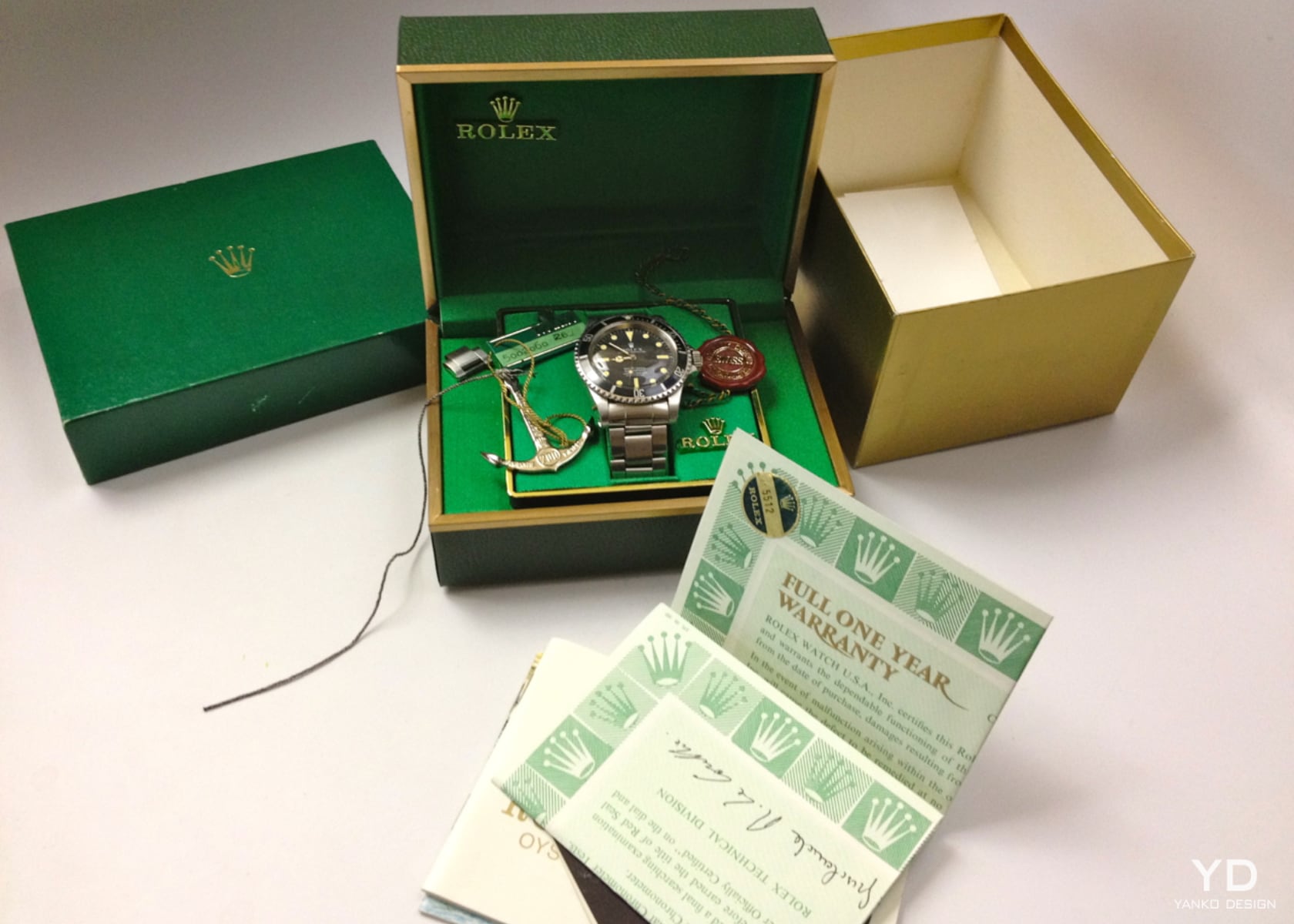
Several important documents and accessories were inside the box. The full one-year warranty card, dated March 26, 1977, confirmed the purchase date. This card, adorned with the iconic Rolex crown, detailed the terms of the warranty. A notable feature was the punched serial number, a practice Rolex no longer employs, adding to the card’s authenticity and historical value.
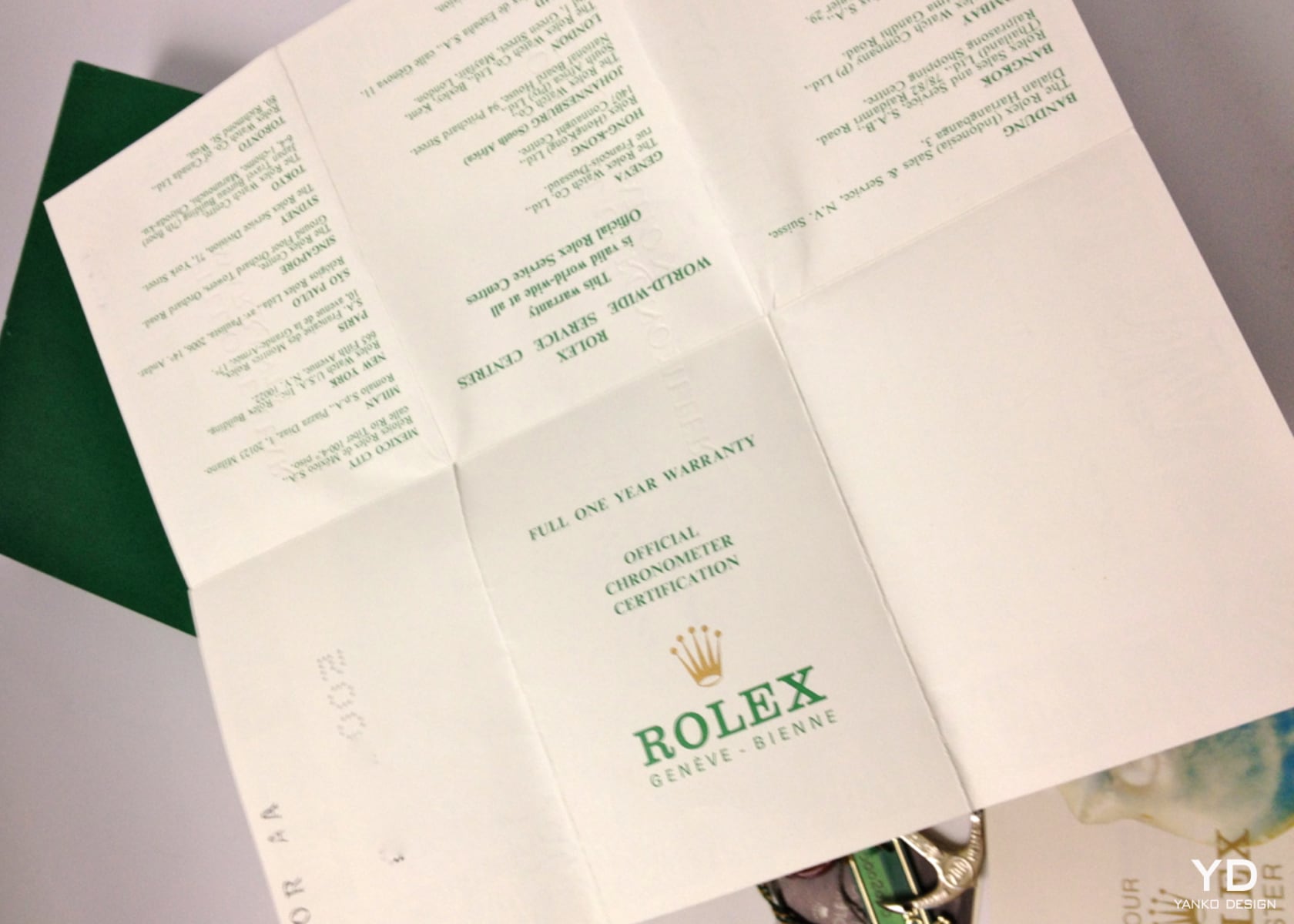
The official chronometer certification, next to the warranty card, assured the watch’s accuracy and performance. Each piece of documentation was meticulously preserved, enhancing the watch’s provenance and making it a true collector’s treasure.
A small booklet provided information on the Perpetual Rotor and the screw-down winding crown, innovations that Rolex had perfected over the years. The illustrations and descriptions highlighted the technical prowess behind the Submariner 5512, emphasizing its reliability and precision.
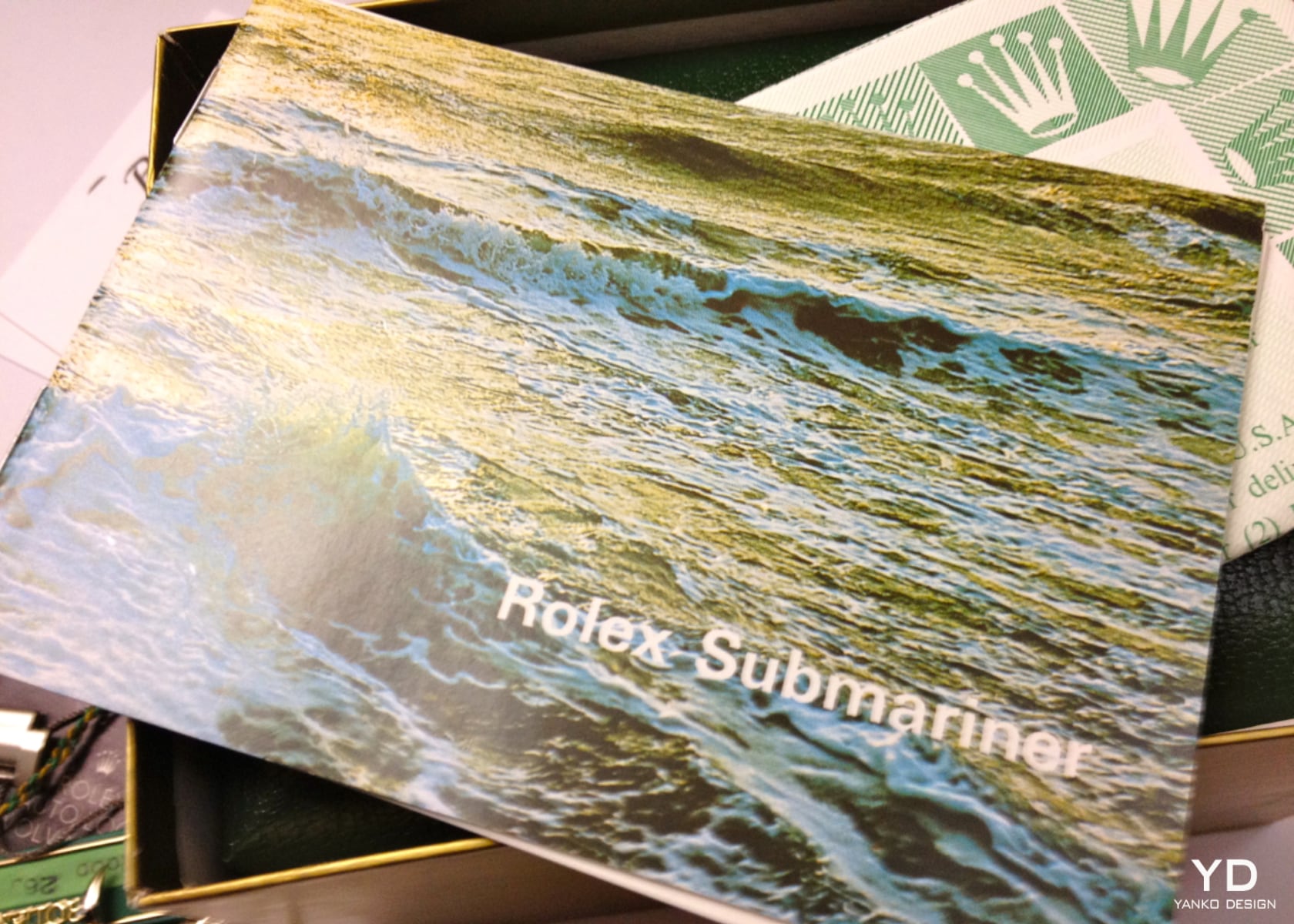
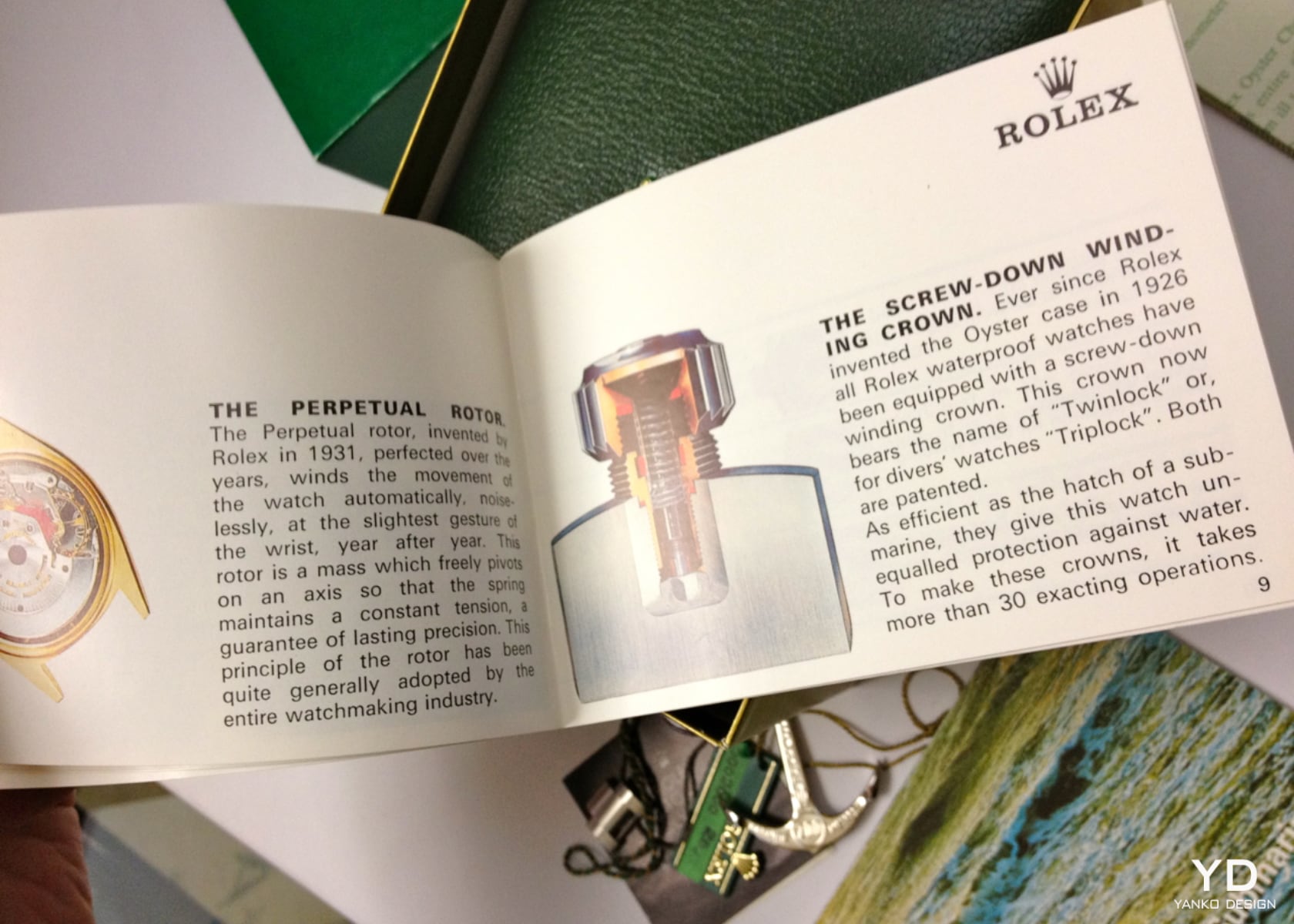
There was also a green Rolex tag with the serial number 5002060, matching the number on the warranty card. This tag indicated the watch’s authenticity and its place in the lineage of Rolex timepieces.
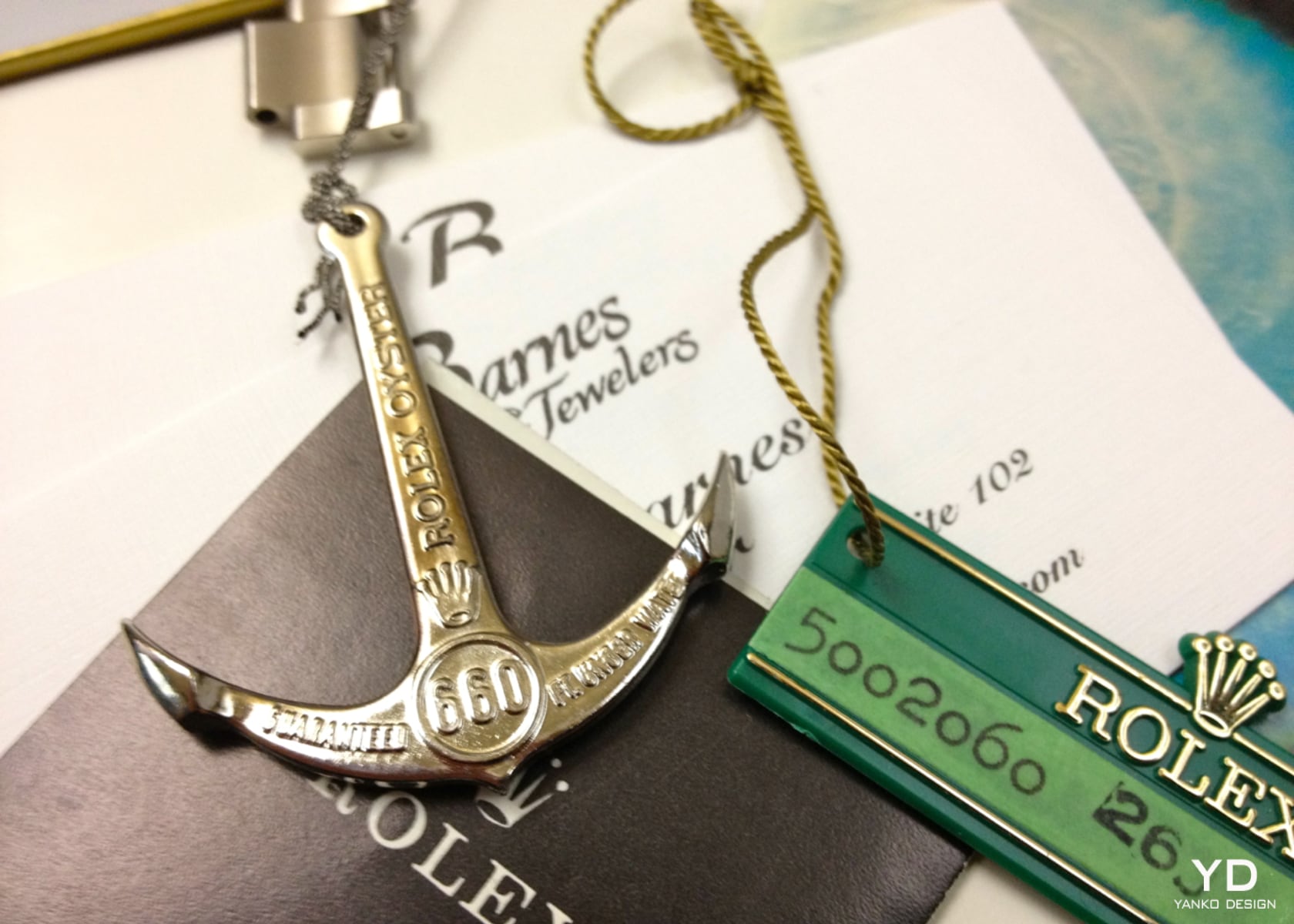
Additionally, a silver anchor with “660” engraved on it, representing the watch’s water resistance in feet, was included. This anchor was a unique and symbolic accessory, underscoring the watch’s capabilities as a professional dive instrument.
Lastly, the box contained a black Rolex booklet printed in 1973 that provided further information on the brand’s history and technical innovations. The booklet added another layer of historical context to this already fascinating find.
As I examined each item, my excitement grew. The meticulous attention to detail and the completeness of the set were astounding. This wasn’t just a purchase but an acquisition of a carefully preserved piece of horological history.
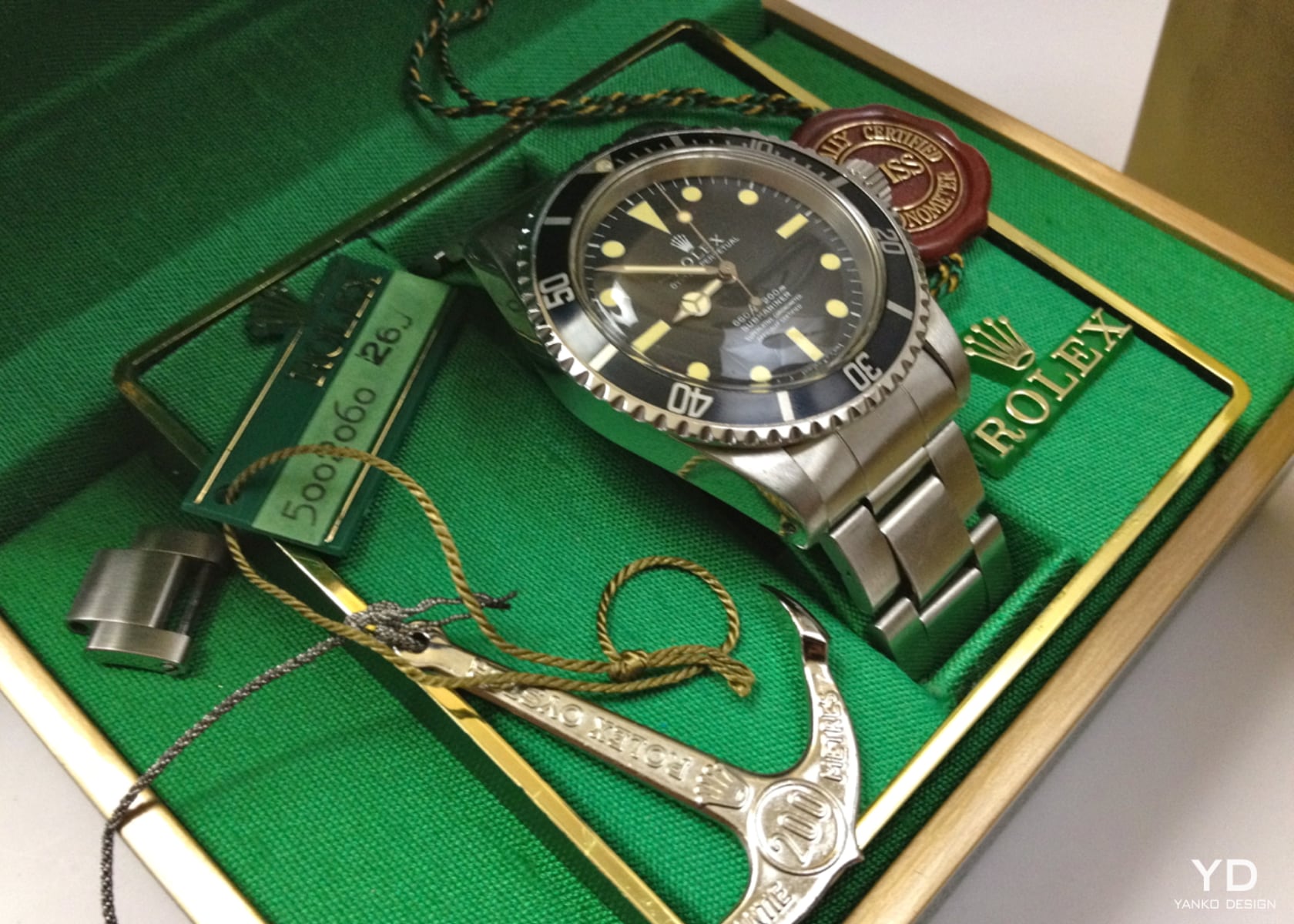
The only issue with the watch was the stuck bezel. Of course, if Gary hadn’t worn it in many years, it made sense, so I knew it would be an easy fix. I discussed it with Paul, who knew a local watchsmith who specialized in servicing vintage Rolex.
Thank you for sticking with me through this incredible journey. Now, it’s time to reveal the cost of this treasure. I nervously asked Paul about the price. He mentioned that Gary had originally purchased the watch from him in 1977 for $1,200. Goosebumps began to rise as anticipation surged through my body. Then, Paul dropped the bomb: “How about $1,800 all in, since the bezel doesn’t work?”
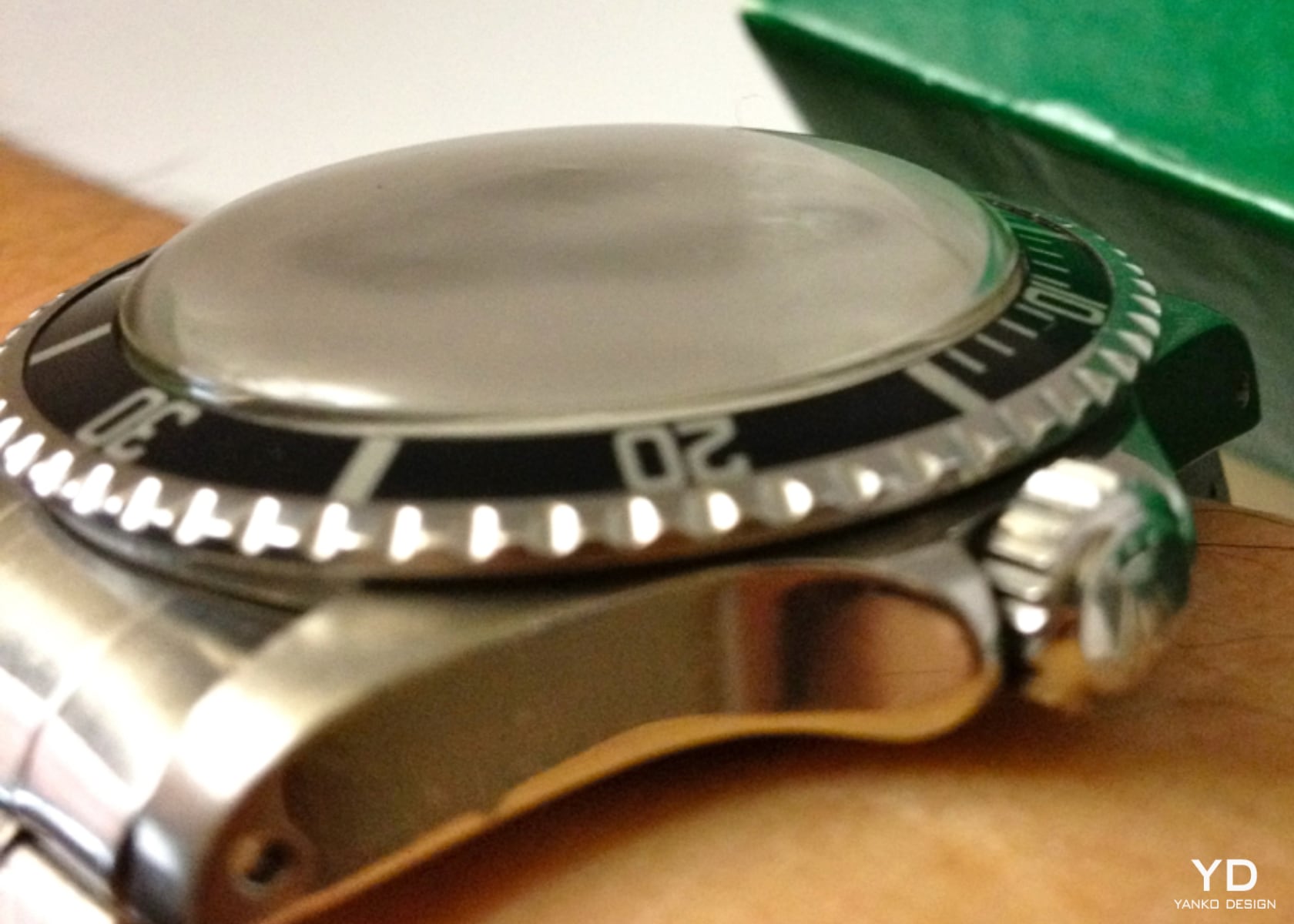
I was ready to fall over but managed to hold my composure. I shook Paul’s hand and agreed, “Perfect, let’s do it.” In my mind, I was ready to hand over my truck, the $2,000 in the glove compartment, and possibly my firstborn (just kidding, Allie, if you ever read this). It felt like the stars, moon, and earth had aligned perfectly at that moment. It was an exhilarating and unforgettable experience.
My Foolish Decision to Sell the Rolex Submariner 5512
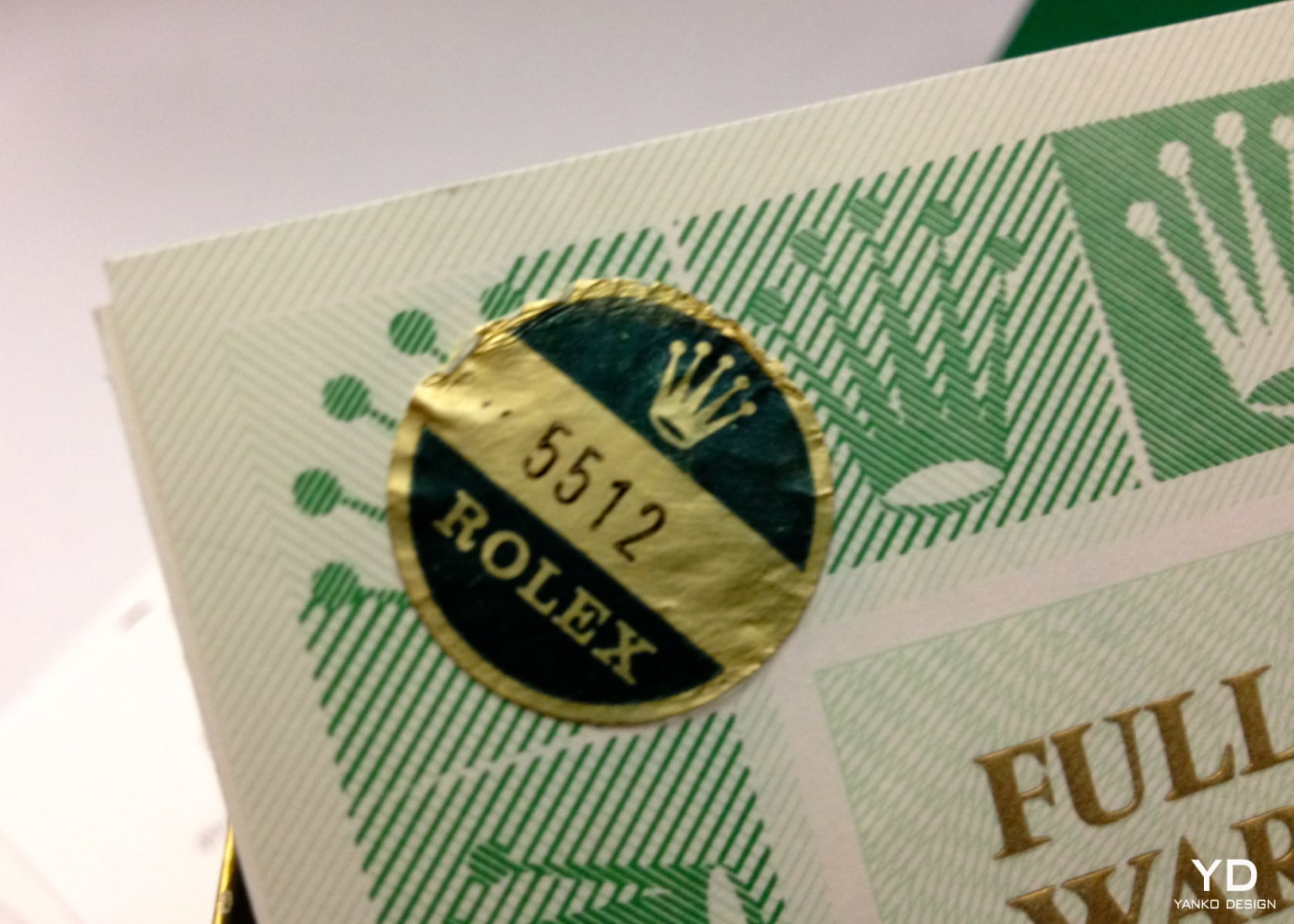
The service costs an additional $300 to clean the bezel and check the movement. I declined the movement cleaning because many things can go wrong. I loved this watch and wore it for years until another itch emerged—the kind you should never scratch. That, my friends, is the itch to sell your Rolex for another brand. Sadly, this was during the rise of Panerai, and yes, I ended up selling the 5512 for $12,000, which was a handsome profit, but for a foolish Panerai Luminor 1950 8 Days GMT.
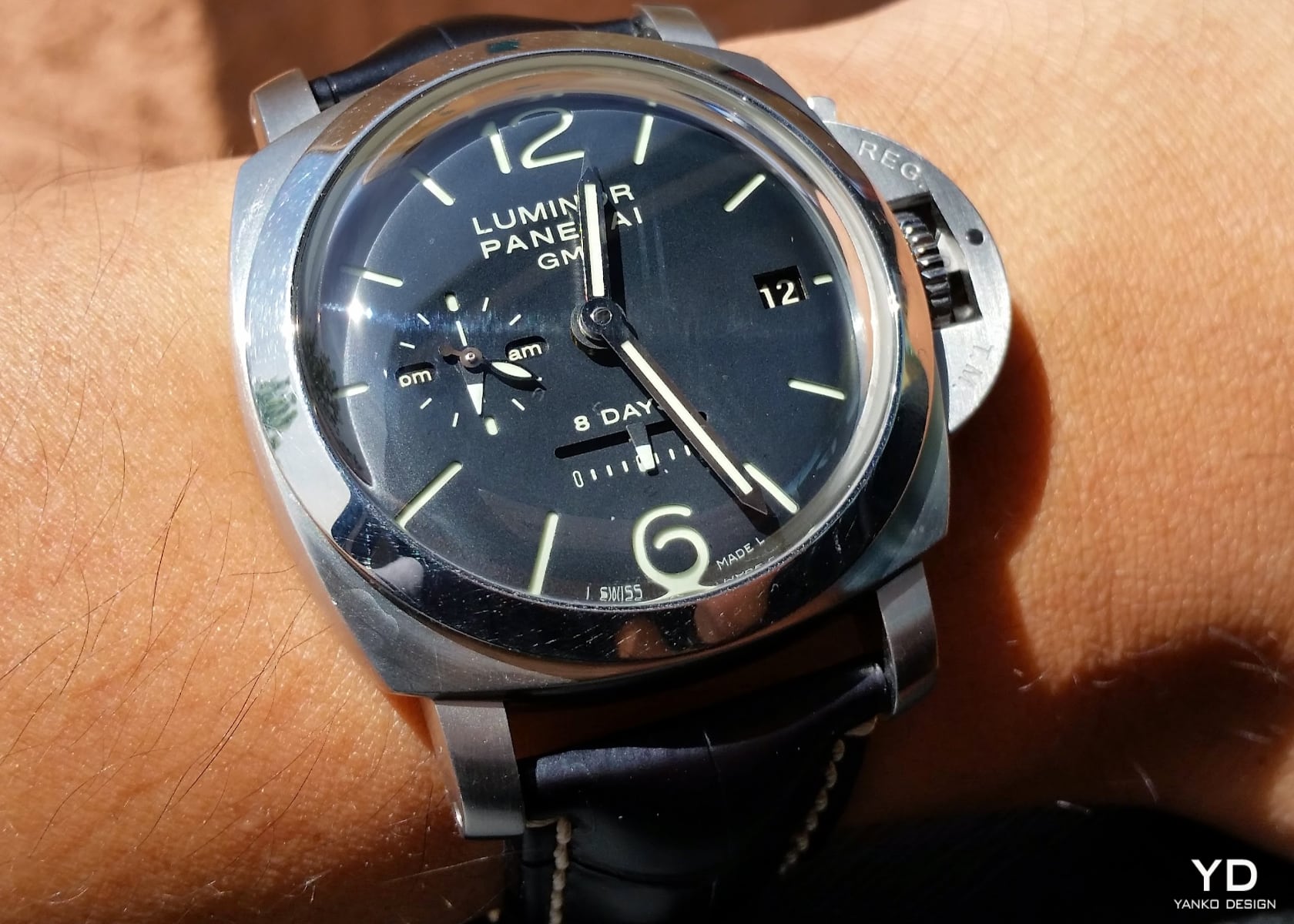
I still wake up in a sweat with regret at least once every few months, haunted by that decision. This is one of my top three regrets in watch collecting. In the following two articles of my Wristwatch Wednesday feature, I’ll share the stories of my other two regrets—the Rolex Submariner “Kermit” and the Audemars Piguet 1998 Nagano Olympic Edition. Stay tuned.
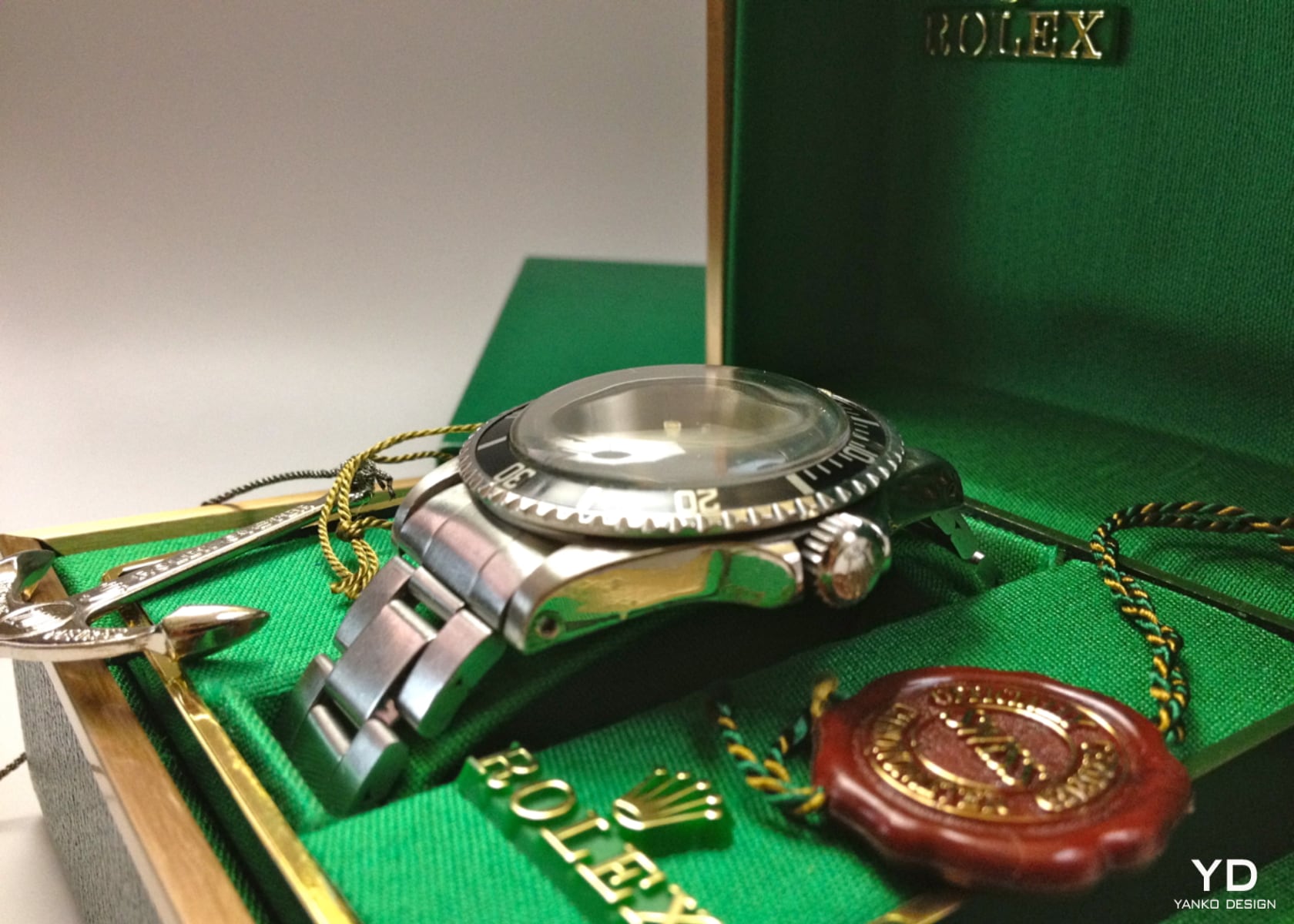
What is the moral of watch collecting? It’s about the journey, the stories, and the connections you make with each piece. Selling a treasured watch for something new might seem exciting, but it can lead to lasting regret. Cherish your collection and think twice before letting go of something irreplaceable. The irony of all this? I bought it from a seller named Paul and ended up selling it to a middleman named Paul.



